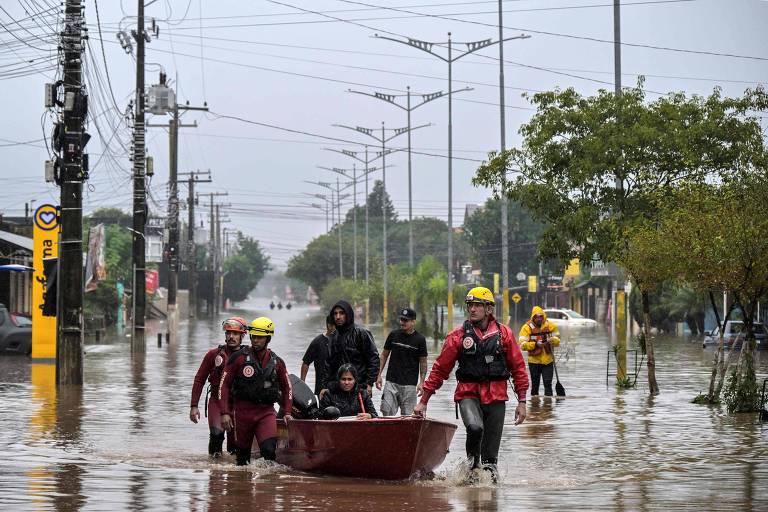The socioclimatic tragedy affecting Rio Grande do Sul is the worst in the country in terms of the number of people who needed to leave their homes.
An analysis by Folha grouped all disasters related to rain, floods, droughts, gales, and other natural events by season since 1991, the beginning of the federal government's historical series.
The state of Rio Grande do Sul recorded 537,380 displaced people on Saturday (11), the highest number ever recorded in the country, according to the Digital Atlas of Disasters, which has consolidated data up to 2022, and preliminary information from the Integrated System of Information on Disasters for 2023.
Displaced people are those who need to leave their homes but did not need to resort to public shelters, as in the case of the homeless. In both definitions, the flooding in Rio Grande do Sul reaches historical marks.
In total, at least 618,000 people are in one of these situations in the state — the sum of 537,000 displaced people with 81,000 homeless.
Until then, the highest number of displacements had been verified in Santa Catarina, in the winter of 2011, with 219,000 people, due to the heavy rains that hit the state. The most affected municipalities were Blumenau and Itajaí, with 135,000 people leaving their homes.
In third place are municipalities in Maranhão, in the fall of 2009, with 163,112 displaced people affected by floods, especially in the cities of Bacabal, Pedreiras, and Trizidela do Vale.
